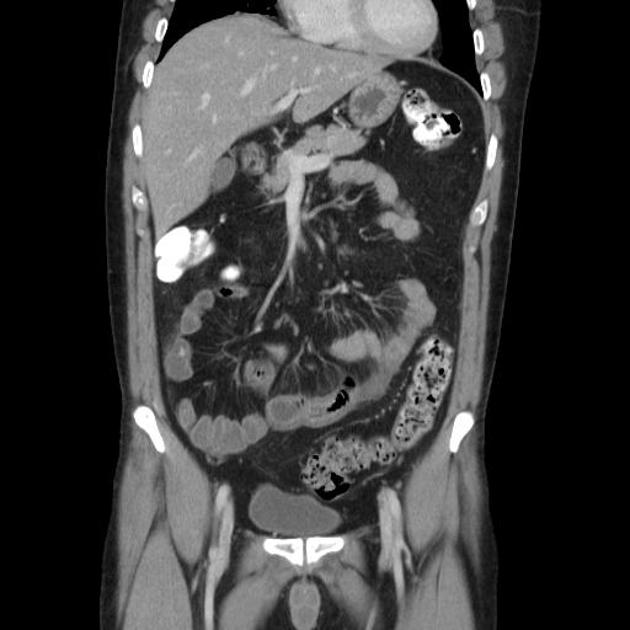colovaginal fistula
Colovaginal fistula is one form of genitourinary fistula. It is also sometimes classed under a type of gastro-intestinal fistula.
Pathology
It refers to a communication between the colon (typically the rectum or sigmoid colon) with the vagina.
At times, specific terms are used dependent on the site of fistulation
- recto-vaginal fistula: between rectum and vagina
- ano-vaginal fistula: between anal canal and vagina
Associations
It is most commonly associated with
- complicated diverticular disease (may account for 20-40% of diverticular-related fistulas )
- also occurs in those with pelvic or colonic malignancies, inflammatory bowel disease and following pelvic radiotherapy.
- radiation related fistulas often involve the distal sigmoid colon and/or rectum, and in these situations, recurrent cancer must be ruled out.
It can be uncommonly associated with certain surgical procedures such as:
- polypropylene mesh sacrocolpopexy
- tension-free vaginal tape procedure
Radiographic features
Fluoroscopy
Conventional fluoroscopic methods such as vaginography and barium enema study (in conjunction with physical examination) have been traditionally used. Vaginography has sensitivity rates ranging between 40-100%.
CT
May show feculent appearing content within the abdomen. Direct communication may be demonstrated if rectal contrast is given.
Treatment and prognosis
The usual management is surgical with primary resection and anastomosis . A conservative management approach may be adopted for poor surgical candidates. Malignant fistulas usually carry a poorer prognosis, and when surgical removal is not practical, they are treated palliatively with fecal diversion or an endoluminal stent .
Siehe auch:
und weiter:

 Assoziationen und Differentialdiagnosen zu colovaginal fistula:
Assoziationen und Differentialdiagnosen zu colovaginal fistula:

